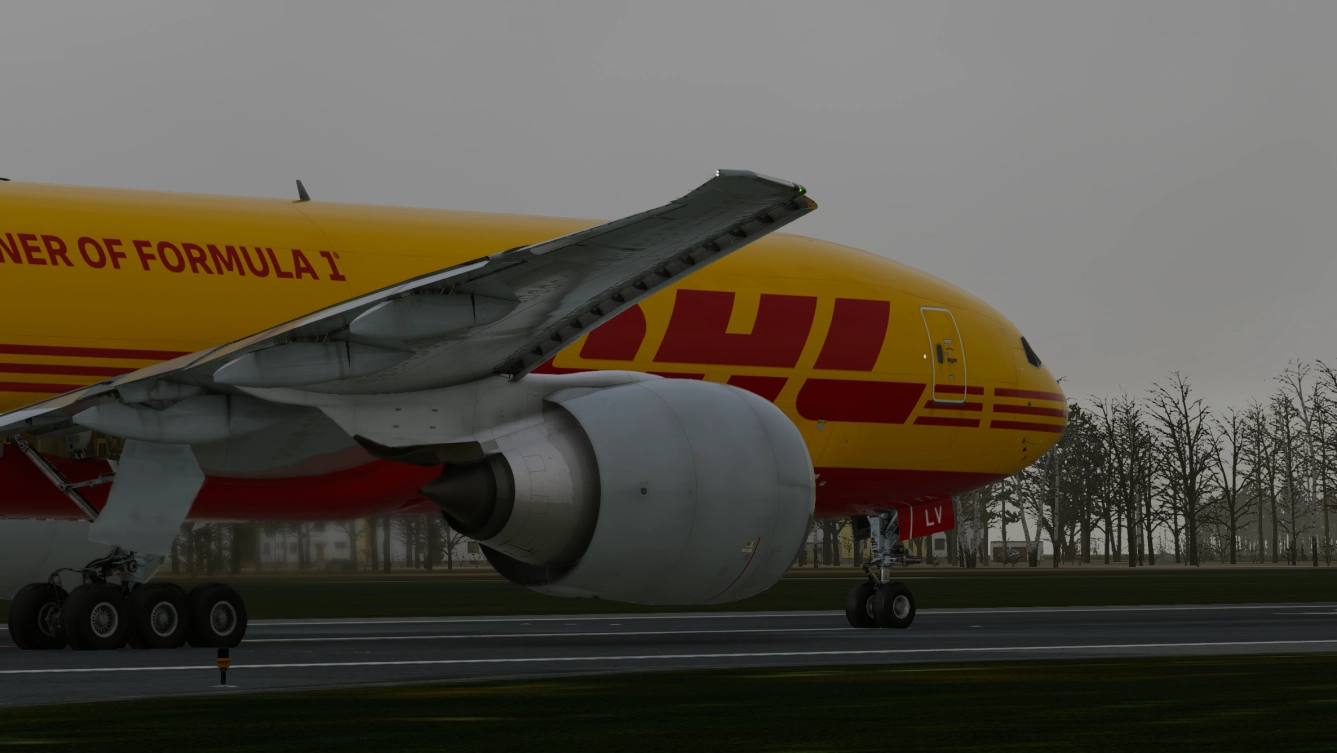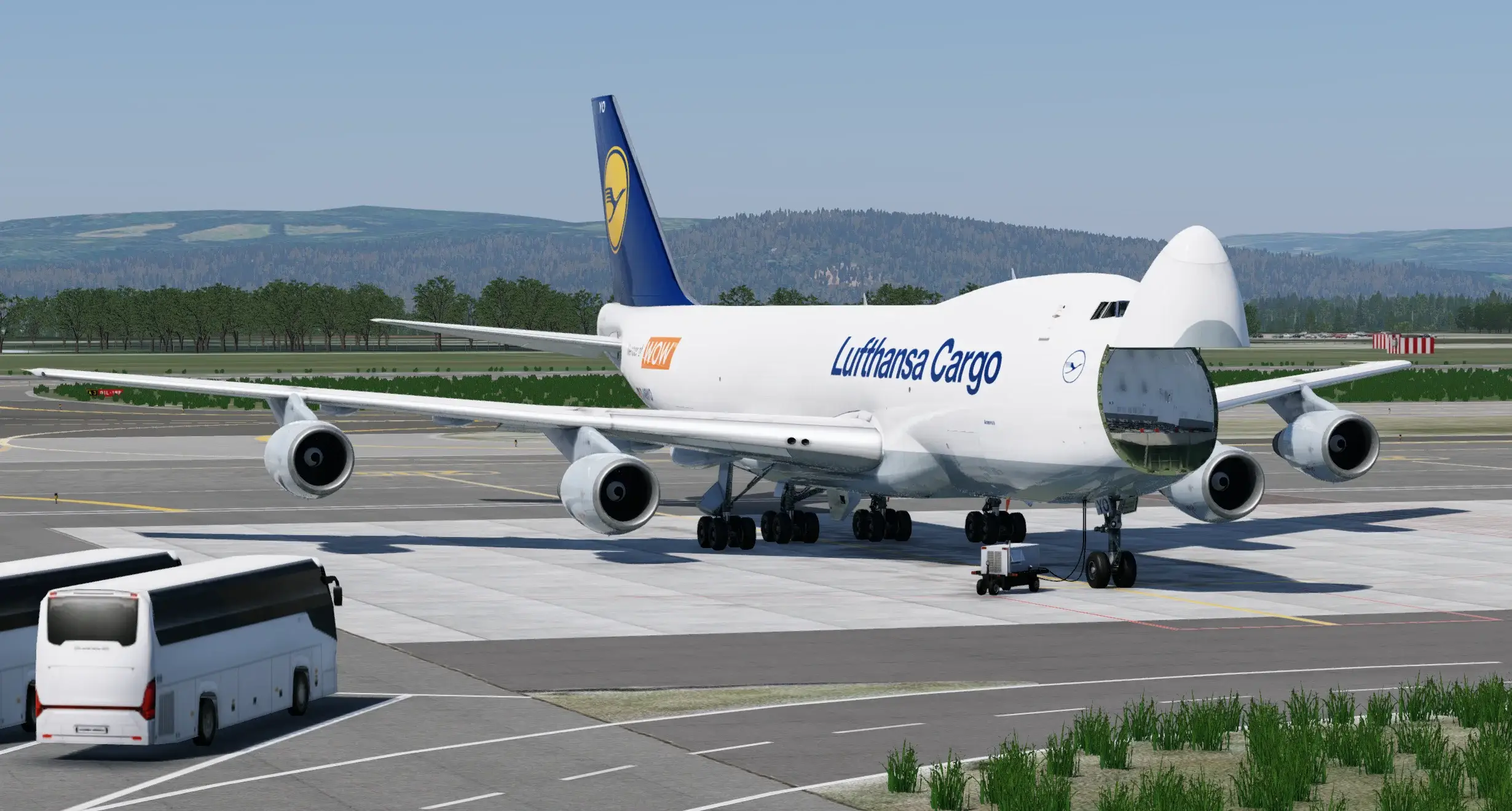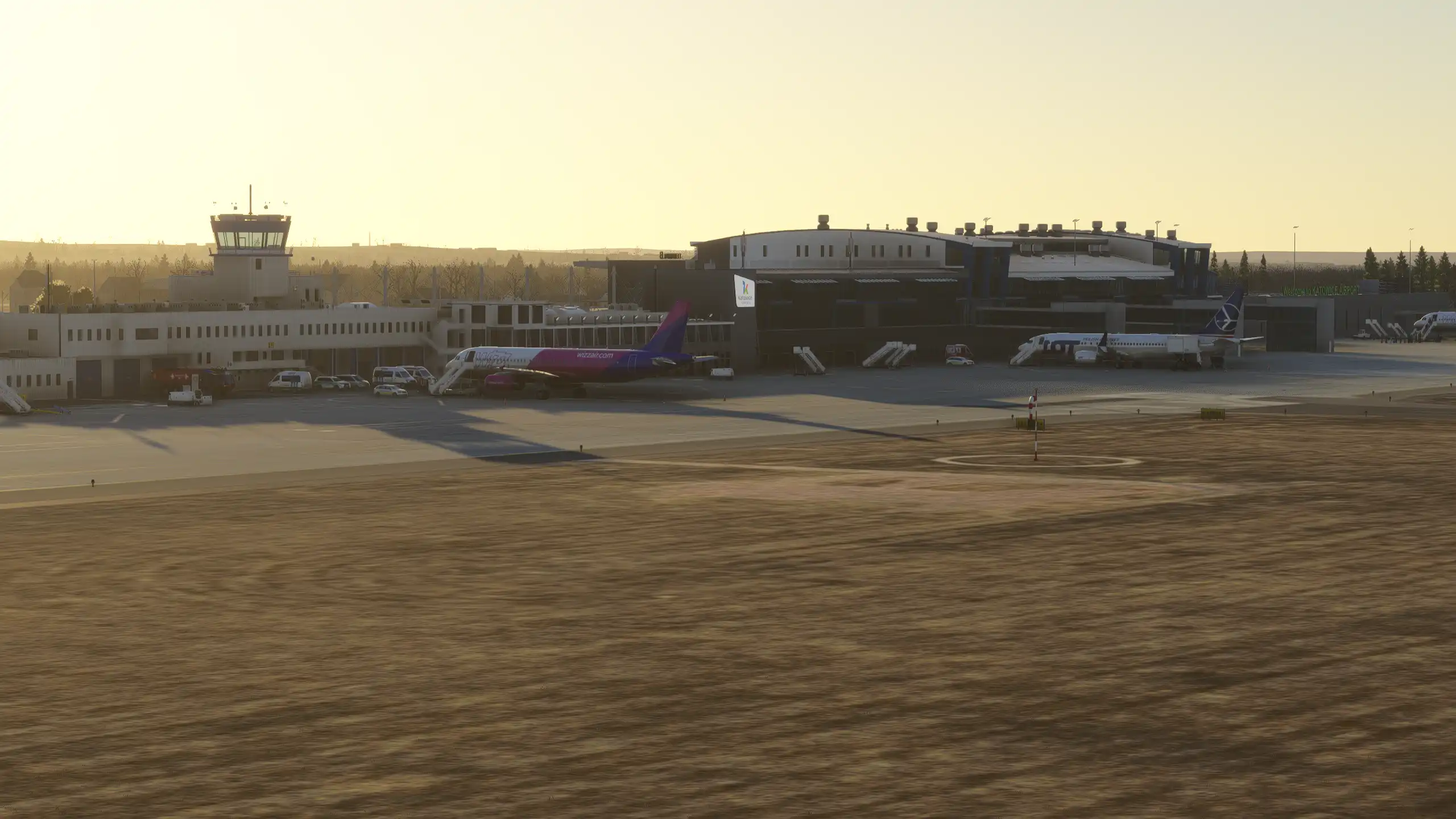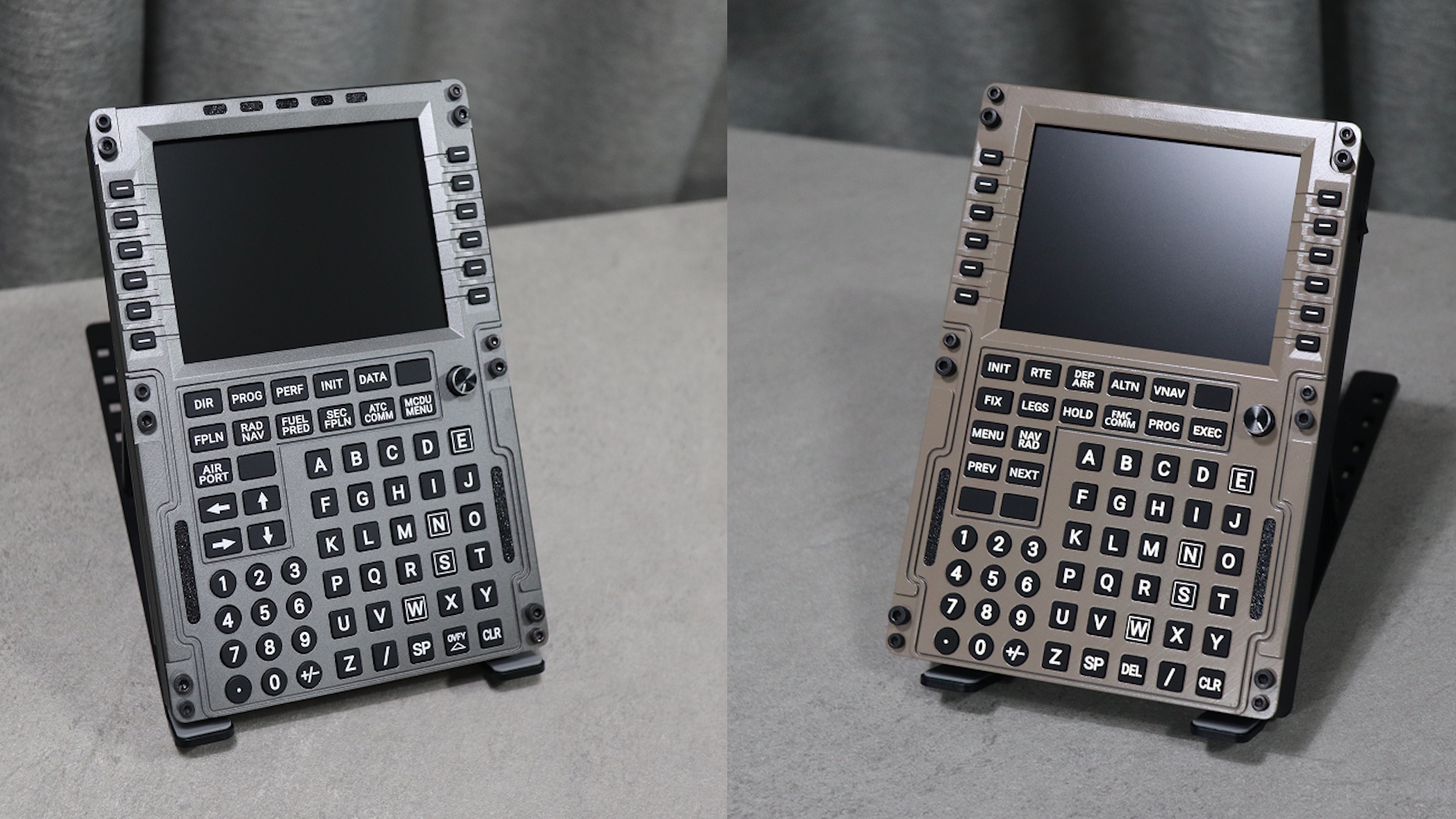Threshold Review: FSimStudios’ Calgary International Airport for MSFS
June 27, 2023
Introduction
Calgary International Airport serves the city of Calgary, Alberta, in Canada, with a yearly average of 17 million passengers. It is the 4th busiest in the country, only behind Toronto, Vancouver, and Montréal.

The airport was built on a patch of land purchased in 1938 for $31,000 when the municipal government was looking to relocate the old Calgary airport due to issues with severe turbulence. An agreement with Trans-Canada Airlines warranted a hangar, and the federal Department of Transportation funded the construction of three runways and minor improvements. It was initially named McCall Field after Fred McCall, a local WWI Ace.

With the advent of World War 2 and Canada's participation, the federal government seized the airport, becoming a fuel and maintenance stop for war aircraft and a flight school during the final half of the war. The conflict was just a minor inconvenience for the commercial operators that kept actively using the airport throughout the war.
The post-war saw rapid development, primarily using what was built during that period, which included new hangars, a new runway, and several infrastructural improvements. One of the hangars was repurposed as a passenger terminal, and the runway 8/26 was expanded to its current length for $750,000.
The air travel boom of the 1950s was too much for the hangar-turned-passenger-terminal, leading to the construction of a new passenger terminal in 1956, which originated from a thesis project by Ken Bond. The then brand-new terminal was one of the most modern in Canada.
With the jet age, the once modern airport was proven unsuitable for jet aircraft, requiring a runway expansion and the installation of expensive landing aids. With that out of the way, they also had to deal with the rising traffic figures, which turned out to be more than they could chew, leading to the airport being sold to the government for $2 million in 1966.
Under the governmental helm, Calgary got a new passenger terminal in 1977, after multiple delays and 110 million dollars more expensive than initially planned. With 56,000 square meters and as modern as possible for the late 70s, Calgary was finally ready for the jet age.
In the late 90s, the managers found out the airport was going to reach its maximum capacity by 2006, leading to multiple operational changes to keep that from happening, along with the creation of a long-term development plan to enlarge the airport, build a new control tower, and build a new passenger terminal.
The new tower came to fruition in 2013, becoming the tallest free-standing control tower in the nation, replacing the former one from 1992, which was demolished.
A year later, the second part of the development plan was finally ready to operate: runway 17L/35R, the longest runway in Canada. A $295 million tunnel was built underneath it.
The final part of the development plan, the new passenger terminal, reached completion in 2016, with 186,000 square meters of total area and 24 passenger gates. It was designed sustainably, utilizing 581 geothermal wells for heating and cooling and a rainwater capture system.
The current layout consists of two terminals, one for domestic operations and the other for international, handling millions of passengers yearly.
It's a hub and headquarters for Calgary-born WestJet, the ninth-largest airline in North America, carrying an average of 25.49 million passengers. Their route network ranges from domestic to Europe. Lynx Air, an ultra-low-cost carrier, also operates in Calgary, taking passengers to eleven destinations in Canada and four in the United States.
The Canadian flag carrier, Air Canada, has Calgary as one of their focus cities, focusing mostly on long-haul operations to Europe.
The scenery claims to offer an extremely accurate and detailed rendition of Calgary International Airport, with sharp, high-resolution texturing, fully detailed terminal interiors, realistic night lighting, and performance-friendly optimization. It also offers a custom GSX profile, a product configurator, and more.
Installation
The scenery is distributed through Contrail, with an intuitive one-click install once you have set up your MSFS Community folder path (or custom folder path if you use Addon Linker) in the settings menu. The download speeds were fast despite my geographic distance from the server.
First Impressions
When checking out new sceneries, I don't like to load right in, opting for the arguably more realistic choice to fly in and either get positively surprised or disappointed. As my plane slid down the magenta line toward the runway, I thought, "It's bigger than I imagined." Michael Scott's catchphrasal urges aside, it's a big airport: flat, long, and wide. Oh, and elevated, sitting at 1,099 meters above mean sea level.

After a windy arrival, I found my WestJet 738 sitting on a beautifully textured taxiway while figuring out where to park. The exquisite texturing also extends to the runway, which looked good from up there while wrestling the controls and trying not to get rocked off course by the - very - strong winds. Would such quality carry over to the terminals?





Fortunately, the claims were truthful: the terminals look great, with lots of attention to the small details such as small placards, wear and tear, jetways that match their real-life counterpart, and proper ground markings.


Modeling / Texturing
The quality extends to the entirety of the airport, landside included. Models are sharp, realistic, and accurate. Properly laid out ground clutter adds to the experience, making it feel like a busy airport even when alone.


There are many maintenance hangars from different airlines, and you can even get inside the Air Canada one, where you will find two airplanes being serviced. The WestJet headquarters is accurately reproduced, with many vehicles parked around it. Oh, the hustle and bustle of a busy HQ!




Sunwest Aviation and Million Air, as per real life, are also accurately represented through their hangars beside WestJet's Q400 hangar.

The terminal interiors look great, showing an outstanding balance between quality and performance, meaning it won't have 3D passengers, or fully modeled shops, which is an understandable compromise given the scale of the project. The textures are sharp enough, with loads of realistic advertisements scattered throughout all terminals, and the corridors are well-lit, with very realistic reflections. They have found a great balance that warrants a good experience without tanking the performance.



The taxiway signage is correctly and accurately laid out, ensuring one won't get lost while taxiing around this massive airport.
Another thing that caught my attention is the WestJet advertisement on the main parking building: it's wrinkled instead of just a flat texture. It might be just a minor detail, but it makes all the difference regarding increasing the immersion level. Every detail counts! On that detail note, the road signage inside and around the airport is also accurate. If only we could commute virtually!

Overall, the quality is thoroughly consistent, which is a feat and a half for big airports, considering how challenging it is to balance detail and performance.



Night Lighting
The night lighting is great. It looks convincing, not too bright, but also not too dark. The many reflectors scattered throughout the airport walls do a fine job of lighting the surface without overdoing it, and the same applies to the light poles.






The dark terminal windows make it look dark inside, but it isn't the case: interiors are decently lit up.
Performance
The store page recommendation to lower the terrain LOD to 70 worried me initially, thinking I was about to fly into a PowerPoint presentation of Calgary International Airport. Fortunately, the TLOD instruction is mainly aimed toward the low-end bracket, which I'm partially into because of my "ancient" 3700X. Frames were stable during the approach and landing, only dipping slightly when getting closer to the main terminal but quickly normalizing. Overall, pretty fluid.

The fact it's a big, spaced out, airport also helps quite a lot, allowing for a lot of breathing room and many corners without massive render effort. Tiny, cluttered airports are generally a lot more demanding on the system. The sheer scale helps the performance-oriented lodding do its work, allowing for a mostly smooth experience.

It's an adequately optimized airport, as long as the user takes their system into account to comply with or dismiss the terrain lod recommendation. And one can always use the scenery configurator to make further compromises if need be, as they allow you to turn off static aircraft, ground service equipment, ground clutter, and terminal interiors.




My system (32 GB RAM, Ryzen 7 3700X, RTX 3080 10 GB) had no framerate issues with everything enabled.
Conclusion
FSimStudios' Calgary does not disappoint, delivering a massively detailed yet highly performant rendition. The quality is on par with the high-end bracket of scenery developers.

Retailing at $21.49 on their official website, CYYC's more than reasonably priced given the sheer scale and the amount of detail they managed to pour in, bringing a very realistic Calgary to the world of Microsoft Flight Simulator. It's uncompromisingly beautiful and highly consistent.
A huge thanks to FSimStudios for providing us with a review copy!
Share this page
COMMENT ADVISORY:
Threshold encourages informed discussion and debate - though this can only happen if all commenters remain civil when voicing their opinions.












